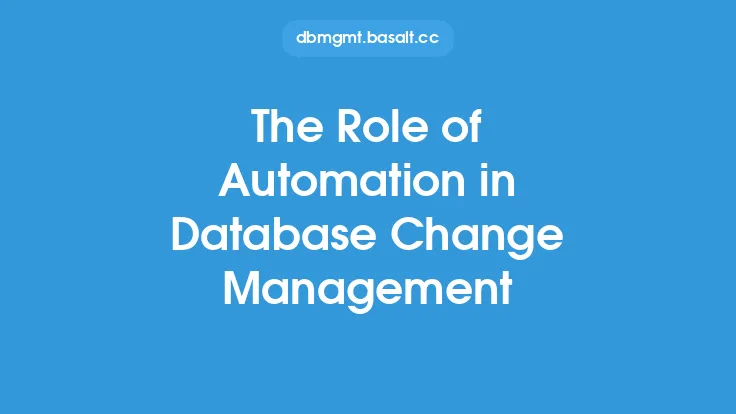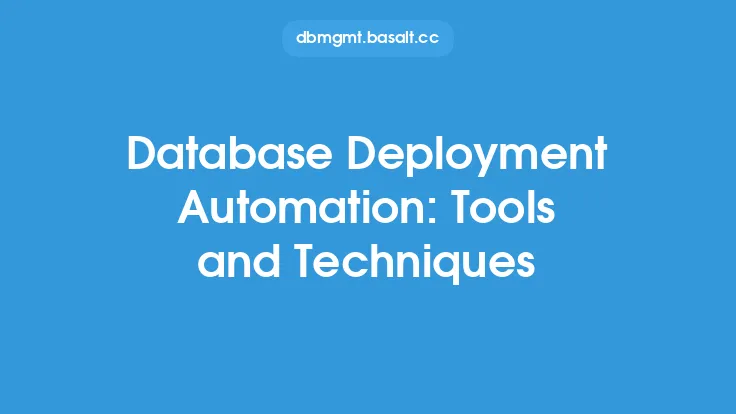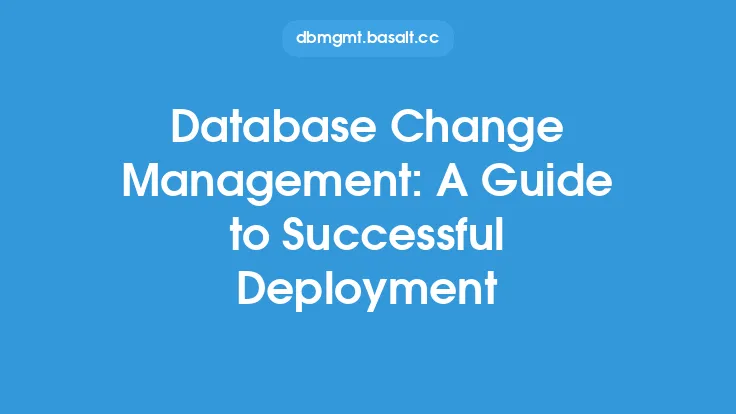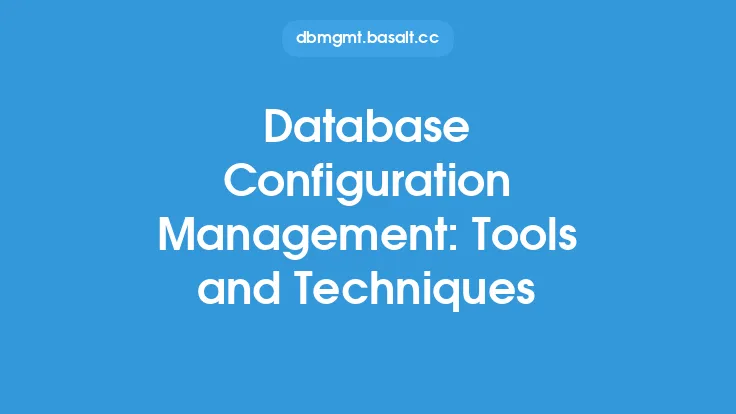Deploying a database is a complex process that involves multiple stages, from development to production. It requires careful planning, execution, and monitoring to ensure that the database is properly configured, tested, and validated before it is made available to users. Database deployment and release management is a critical aspect of database implementation, as it ensures that changes to the database are properly managed, tested, and deployed to production without disrupting the business.
Introduction to Database Deployment and Release Management
Database deployment and release management is the process of planning, coordinating, and executing the deployment of database changes to production. It involves managing the entire lifecycle of database changes, from development to deployment, and ensuring that all changes are properly tested, validated, and documented. The goal of database deployment and release management is to ensure that database changes are deployed quickly, reliably, and with minimal disruption to the business.
Key Components of Database Deployment and Release Management
There are several key components of database deployment and release management, including:
- Version control: This involves using tools such as Git or Subversion to manage changes to database code, including schema changes, stored procedures, and other database objects.
- Build automation: This involves using tools such as Jenkins or TeamCity to automate the build process, including compiling code, running tests, and creating deployment packages.
- Deployment automation: This involves using tools such as SQL Server Deployment Wizard or Oracle Enterprise Manager to automate the deployment process, including creating backups, applying changes, and validating the database.
- Testing and validation: This involves using tools such as SQL Server Management Studio or Oracle SQL Developer to test and validate database changes, including running unit tests, integration tests, and user acceptance tests.
- Release management: This involves managing the entire release process, including planning, coordinating, and executing the deployment of database changes to production.
Benefits of Database Deployment and Release Management
There are several benefits to implementing a database deployment and release management process, including:
- Improved quality: By automating testing and validation, database deployment and release management helps ensure that database changes are properly tested and validated before they are deployed to production.
- Increased efficiency: By automating the build, deployment, and testing process, database deployment and release management helps reduce the time and effort required to deploy database changes.
- Reduced risk: By managing the entire release process, database deployment and release management helps reduce the risk of errors, downtime, and data loss.
- Better collaboration: By providing a centralized platform for managing database changes, database deployment and release management helps improve collaboration between developers, DBAs, and other stakeholders.
Best Practices for Database Deployment and Release Management
There are several best practices for database deployment and release management, including:
- Use version control: Use version control tools to manage changes to database code and ensure that all changes are properly tracked and documented.
- Automate testing and validation: Use automated testing and validation tools to ensure that database changes are properly tested and validated before they are deployed to production.
- Use deployment automation tools: Use deployment automation tools to automate the deployment process and reduce the risk of errors and downtime.
- Implement release management: Implement a release management process to manage the entire release process, including planning, coordinating, and executing the deployment of database changes to production.
- Monitor and troubleshoot: Monitor the database deployment process and troubleshoot any issues that arise to ensure that database changes are properly deployed and validated.
Tools and Technologies for Database Deployment and Release Management
There are several tools and technologies available for database deployment and release management, including:
- Git: A version control tool that helps manage changes to database code.
- Jenkins: A build automation tool that helps automate the build process.
- SQL Server Deployment Wizard: A deployment automation tool that helps automate the deployment process for SQL Server databases.
- Oracle Enterprise Manager: A deployment automation tool that helps automate the deployment process for Oracle databases.
- SQL Server Management Studio: A testing and validation tool that helps test and validate database changes.
- Oracle SQL Developer: A testing and validation tool that helps test and validate database changes.
Challenges and Limitations of Database Deployment and Release Management
There are several challenges and limitations to implementing a database deployment and release management process, including:
- Complexity: Database deployment and release management can be complex, especially for large and distributed databases.
- Cost: Implementing a database deployment and release management process can require significant investment in tools, technologies, and personnel.
- Time: Implementing a database deployment and release management process can require significant time and effort, especially for large and complex databases.
- Risk: Database deployment and release management can involve risk, especially if changes are not properly tested and validated before they are deployed to production.
Conclusion
Database deployment and release management is a critical aspect of database implementation, as it ensures that changes to the database are properly managed, tested, and deployed to production without disrupting the business. By implementing a database deployment and release management process, organizations can improve the quality, efficiency, and reliability of their database deployments, while reducing the risk of errors, downtime, and data loss. While there are several challenges and limitations to implementing a database deployment and release management process, the benefits of improved quality, increased efficiency, and reduced risk make it a worthwhile investment for any organization that relies on databases to support their business operations.





